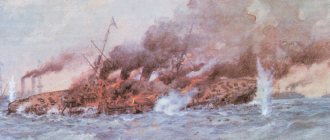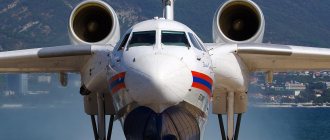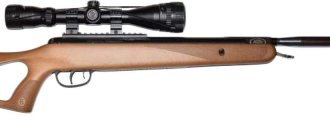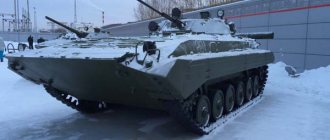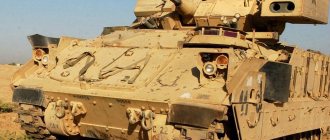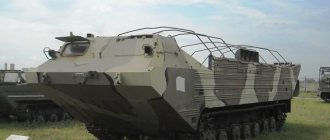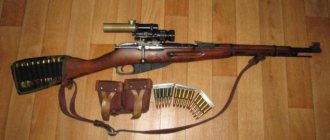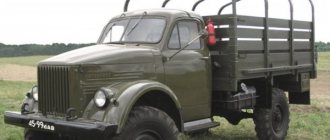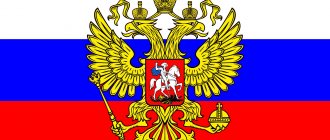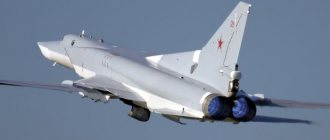The last voyage of the battleship "Navarin"
At the end of April 1904, at a Special Meeting chaired by Emperor Nicholas II, it was decided to include the battleship Navarin, which was undergoing repairs and partial modernization in Kronstadt, into the 2nd Pacific Squadron.
Due to the forced reduction in the time allotted for the implementation of the planned measures, some of the previously planned work had to be canceled, and already from June 1904, the ship, along with the battleship Sisa the Great and the armored cruiser Admiral Nakhimov, which had also undergone repairs, stood in the Great Kronstadt roadstead. By order of Z.P. Rozhdestvensky dated June 23, 1904 (hereinafter all dates are given in the old style), “Navarin”, together with “Oslyabya”, “Sisoy the Great” and “Admiral Nakhimov” was enrolled in the 2nd armored detachment, headed by Rear Admiral D. G. Felkersam, who raised his flag on the battleship Oslyabya.
With the transfer of the squadron to Revel (Tallinn) on August 30, 1904, a period of combat training began: for a month, ships of the 1st and 2nd ranks practiced squadron evolutions, conducted barrel and caliber training exercises, and destroyers practiced launching torpedoes. While developing a coal loading schedule for the upcoming passage, the ships in Reval were urgently loaded with coal three times, however, the loading speed, due to the insufficient attention of the ship's management to the organization of work, was relatively low. Thus, at Navarino it was possible to receive from 11.4 to 23.9 tons of coal per hour; at the same time, on the Japanese battleship Fuji, for example, on April 24, 1905, the corresponding figure was one hundred and three tons in 27 minutes.
On September 28, 1904, the squadron left the port of Emperor Alexander III, arriving the next day in Libau (Liepaja). Having replenished coal reserves, the main forces of the 2nd Pacific Squadron left Libau on October 2, 1904. At Cape Skagen (Skagen Odde), the squadron was divided into six detachments (Nos. 1-6), four of which, including the 5th (battleships) "Oslyabya", "Sisoy the Great", "Navarin", the armored cruiser "Admiral Nakhimov", the transports "Meteor" and "Malaya") were to proceed to Tangier (Morocco).
On the night of October 8-9, 1904, in the Dogger Bank area, the so-called “Hull Incident” occurred (with a high degree of probability, provoked by the British government), during which Russian ships fired at the English fishing flotilla and their cruiser “ Aurora". This led to a further deterioration in relations between London and St. Petersburg, as well as the forced delay of the 1st armored detachment in the Spanish port of Vigo until the conflict was resolved.
The 2nd Pacific Squadron arrived in Tangier in parts, the first to arrive on October 16 was Detachment No. 5 (the flag of Rear Admiral Felkersam), the last, five days later, was Detachment No. 1 (the flag of Vice Admiral Rozhestvensky). On the same day, the squadron commander, due to the unreliability of the Navarina refrigerators and the Sisoy the Great boilers, gave the order to these two battleships along with three cruisers (Svetlana, Zhemchug, Almaz), which were later joined by 9 destroyers and 9 transports, follow the Suez Canal to the island of Madagascar (rendezvous place for the entire squadron). The flagship of the Separate detachment of ships of the 2nd Pacific Squadron was the battleship "Sisoy the Great", to which Rear Admiral Felkerzam transferred his flag from the "Oslyabi". During the transition from the island of Crete to Port Said (Egypt), both battleships for the first time, after leaving Russia, conducted training firing on shields, showing satisfactory results. Having safely passed the Suez Canal on November 12-13, 1904, Felkerzam’s detachment, observing along the way the security measures developed taking into account the “Gullah Incident”, with a call to receive water and coal at Port Said (Egypt) and Djibouti (French Somalia), 15 December 1904 approached the entrance to Nossi Be Bay (Madagascar). Without resorting to the services of pilots, the ships of the detachment independently proceeded to the bay, which turned out to be so spacious that it could later accommodate the entire 2nd Pacific Squadron.
Battleships in Nossi-Be, far right - "Navarin"
During the stay of the Second Pacific Squadron in one of the bays of the island of Nossi-Bé Island, the Navarin, which, together with the Oslyabya, was one of the two most accurate-shooting battleships, took part in training caliber shooting four times (14, 18, 21 and 25 January 1905), during which the battleship fired 40 12″ and 120 6″ shells.
For comparison, the battleships of the 1st combat detachment of the United Fleet ("Mikasa", "Shikishima", "Fuji" and "Asahi") at the only spring caliber firing of 1905, held on April 12, 1905, fired a total of 32 12 ″ projectile, sixteen of which hit the target. At the same time, the battleship "Prince Suvorov", which fired on January 19, 1905 in much less favorable conditions (the shield as a target instead of a small island for the Japanese, and also a much greater distance than the Japanese), fired its main caliber from the bow turret six shells and achieved five hits.
After an almost three-month stay, the squadron left Madagascar on March 3, 1905, then making an unprecedented crossing of the Indian Ocean in 28 days. On April 26, 1905, the 2nd and 3rd squadrons met off the coast of Vietnam in Van Phong Bay, and the main forces of the 2nd Pacific Squadron began to consist of 8 squadron battleships, three coastal defense battleships, six rank I cruisers and three II cruisers rank.
The last loading of coal on the Navarino took place on May 10, 1905 near Shanghai, during which the fuel supply on board was brought to more than 1,200 tons. All the bunkers were filled with coal, the living and battery decks, as well as the poop and forecastle of the ship were covered. On the same day, the 2nd armored detachment was left without a commander, after a long illness, Rear Admiral D. G. Felkerzam (who left behind prophetic letters about the fate of Russia) died after a long illness, and the commander of the squadron battleship Oslyabya took over as temporary commander of the detachment "Captain 1st Rank V.I. Behr 1st.
By the morning of May 14, 1905, the amount of fuel reserves on the Navarin had decreased, according to the official report, to 751 tons (the normal supply is from 700 to 730 tons), and the battleship entered the battle, having coal only in the coal pits and the fire compartment ( The battleship, which had effective desalination plants, did not have excess reserves of fresh water), which in terms of operational overload compared favorably with the already mentioned Japanese battleship Fuji, for example. The latter, according to the English observer Captain T. Jackson, Royal Navy, on the eve of the Battle of Tsushima had from 1,163 to 1,300 tons of coal (the normal supply is 700 tons).
The day before, in preparation for the battle, all the “excess” wood on the Navarino was thrown overboard, with the exception of the boards in the rostra intended for loading coal. The boats were one-third filled with water and wrapped in anti-mine nets, the conning tower was wrapped in perlinas, and improvised traverses were made from bags of coal and sand on the decks. At 16:30 the signal “Prepare for battle” was transmitted to the squadron, and at 18:00 - “Tomorrow by dawn have pairs for full speed.”
In pursuance of the misinterpreted combat order of the squadron commander, “Course north-east 23°. Hit the lead" (intended only for the 1st armored detachment), "Navarin" from the bow turret of the main caliber opened fire on the Japanese flagship, the remaining guns were silent until the death of the battleship "Oslyabya".
During the day's battle, the Navarino's smokestacks and boats were damaged, and one 47 mm gun was disabled. Two medium-caliber shells caused small fires in the wardroom and forecastle, which were later successfully extinguished. The side 6″ armor of the casemate of medium-caliber guns received several hits from shells of unknown caliber.
In the area of the waterline, the battleship received seven hits (including one large-caliber projectile, presumably 12″ caliber, in the stern and bow), of which four were in the aft compartment, which resulted in flooding in the stern, and three in the bow, where the water that penetrated into the torpedo tube compartment made the bow somewhat heavier, but the ship continued to maintain a squadron speed of 8-10 knots.
The ship's medium artillery, firing primarily with high-explosive shells, used up less than half of its ammunition in the Battle of Tsushima.
At 20:10 (hereinafter Japanese time), the remnants of the 2nd Pacific Squadron were attacked for the first time (in total, 21 fighters and 37 destroyers were approaching Nebogatov’s detachment, which was trying to hide from the Japanese by false turns, from three sides). Looking ahead, we note that this night for the Japanese was more effective than the night after the battle at Cape Shantung, when 18 of their fighters and 31 destroyers, which fired 74 torpedoes (32 and 42, respectively) at the ships of the Port Arthur squadron, achieved only one hit (the torpedo did not explode upon impact) into the battleship Poltava.
The detachment led by Nebogatov, initially consisting of nine ships (seven battleships and two cruisers), disintegrated with the onset of darkness. Unable to maintain a speed of about 12 knots, the Admiral Ushakov, Navarin, Sisoy the Great and the cruiser Admiral Nakhimov gradually fell behind.
At about 21:00, Navarin was attacked by the 4th Fighter Detachment of the 2nd Fleet (the pennant of Captain 2nd Rank Kantarō Suzuki) consisting of the Asagiri (朝霧) and Murasame (村雨) fighters. ) ("Harusame" type, assembled in Japan), as well as "Asashio" (朝潮) and "Shirakumo" (白雲) ("Shirakumo" type, built by the English company Thornycroft), and one of the one or two torpedoes they fired ( probably "Otsu" type, warhead - 52 kg of shimosa) at 21:05 exploded in the area of the right aft 6″ magazine.
Asashio fighter
Electric lighting was lost in the battery deck, and in the left bow fire compartment, steam was cut off in three bow boilers due to a burst steam pipe. After repairing the pipes in the bow boilers, steam began to be created, but the boilers were no longer put into operation. Even in the daytime battle, the living deck of the Navarin, which had noticeably sank with its stern, separated by watertight bulkheads only to a height of 0.91 m from the waterline (at normal displacement), quickly found itself flooded with water, rushing into the ship through the hole formed after the explosion.
As a result of the extensive flooding that followed, the stern further subsided so much that the water, covering the quarterdeck, approached the stern tower.
The water alarm was sounded, the cellar was battened down and the plaster began to be applied; but, since the ends touched the kingston pipes, all efforts were in vain. After several people were washed overboard by the water from the poop deck, attempts to get the patch on were stopped and the battleship set sail; There was a rumor among the crew that the Navarin was moving at a four-knot speed to the nearest (obviously Korean) coast. To pump water out of the flooded aft compartment, bow and stern pumps were used, and buckets were also used.
While repelling subsequent torpedo attacks, the battleship, without opening the searchlight, fired segmented shells. As a result of several successful hits, one of the Japanese 2nd class destroyers of the “No. 22” type (No. 34 or No. 35) was so damaged that it subsequently sank.
Destroyer type "No. 22"
The Navarin was last attacked at about 02:00, 27 miles northeast of Cape Karasaki, when the battleship was discovered a second time by the 4th Fighter Squadron. Taking the lead at a speed increased to 15 knots, three fighters remaining unnoticed (Murasame, due to a strong leak from a six-inch shell received in the day's battle, headed for Takeshiki) at a distance of about 2,000 meters after overtaking the Navarina, they noticed another Russian ship. After a successful torpedo attack by the latter, the returning Japanese were met by fire from 47 mm and 37 mm Navarina guns, and despite this, they managed to drop six bunches of mines across the battleship’s course (type “Gō kirai 1”, adopted for service in October 1904. ), each of which consisted of four mines connected by a cable, held at a depth of six meters by means of floats.
The photograph shows crew members with a fragment of the skin pierced by a Russian shell.
Longitudinal section of a mine
Two of these mines almost simultaneously hit the Navarin, the first in the area of the fire compartment in the middle of the starboard side, and the second in the midships of the port side. The entire engine crew was killed, soon the command “Save” was sounded, the battleship began to list to starboard and after 7-10 minutes disappeared under water.
In response to the question of British observers why the destroyers did not rescue several hundred Russian sailors who were caught in the water, the Japanese spoke about their fears of being blown up by their own mines.
Of the entire crew of the Navarino, on May 14-15, 1905, 26 officers, one priest, 11 conductors and 643 lower ranks died and drowned; only three Navarinians managed to survive. After a day's stay in the water, they were picked up by an English commercial steamer (in the photo from left to right) Porfiry Tarasovich Derkach - fireman of the 2nd article, Knight of St. George and Stepan Dmitrievich Kuzmin - gunner, Knight of St. George.
The third survivor, signalman Ivan Andrianovich Sedov, was picked up in an unconscious state by a Japanese fighter Fubuki (吹雪) fourteen hours after the death of the ship.
List of used literature 1. Russian-Japanese War 1904-1905. Book six. Campaign of the 2nd Pacific Squadron to the Far East. 2. Russian-Japanese War 1904-1905. Fleet actions. Documentation. Reports and descriptions of participants in the battle. 3. Description of military operations at sea in 37-28, Meiji (1904-1905) 4. Top secret history of the Russian-Japanese war at sea in 37-38. Meiji. 5. Other sources.
Inhabitants
Some of the inhabitants of this area are listed in the Red Book. One of them is a large eared sea lion seal, which is also called the northern sea lion.
Another representative of the Red Book also lives here - a predator, the white-tailed eagle, which belongs to the hawk family.
And in the sea surface you can find large numbers of a huge gray whale, which can reach 15 meters in length and weigh up to 35 tons.
Quite often here you can hear the whistle and rustle of a rather rare animal - the black-capped marmot. But to see the culprit of the noise, you need to try very hard.
Meteorological station
At Cape Navarin there was once a radio meteorological station that supplied energy to the lighthouse. But in 1990, one of the generators leaked. All scientists, fleeing from radioactive exposure, quickly and lightly left the station, leaving behind all their personal belongings, books, and instruments that can still be found there.
Later, all the effects of radiation were gradually destroyed, and the troubles were forgotten. Currently, the station premises serve as a refuge for travelers who want to hide from the elements that from time to time rage in this area.
Links[edit]
- Campbell, N. J. (1978). "Battle of Tsu-Shima". In Preston, Anthony (ed.). Warship II
. London: Conway Maritime Press. pp. 46–49, 127–135, 186–192, 258–265. ISBN 0-87021-976-6.CS1 maint: ref=harv (link) - Chesneau, Roger & Kolesnik, Eugene M., eds. (1979). Conway's World Warships 1860–1905. Greenwich, UK: Conway Maritime Press. ISBN 0-8317-0302-4.CS1 maint: ref=harv (link)
- Evans, David and Peattie, Mark (1997). Kaigun: Strategy, Tactics and Technology in the Imperial Japanese Navy, 1887–1941
. Annapolis, MD: Naval Institute Press. ISBN 0-87021-192-7.CS1 maint: ref=harv (link) - Forczyk, Robert (2009). Russian battleship versus Japanese battleship, Yellow Sea 1904–05
. Oxford, UK: Osprey. ISBN 978 1-84603-330-8.CS1 maint: ref=harv (link) - Friedman, Norman (2011). Naval weapons of the First World War
. Barnsley, UK: Seaforth. ISBN 978-1-84832-100-7.CS1 maint: ref=harv (link) - McLaughlin, Stephen (2003). Russian and Soviet battleships
. Annapolis, MD: Naval Institute Press. ISBN 1-55750-481-4.CS1 maint: ref=harv (link) - Morris, Rear Admiral Roger (October 2007). "The Night After Tsushima: The End of the Imperial Russian Fleet 27–28 May 1905." Warships
. London: World Shipping Society (157): 14–30. ISSN 0966-6958.CS1 maint: ref=harv (link) - Pleshakov, Konstantin (2002). The Tsar's Last Armada: An Epic Journey to the Battle of Tsushima. New York: Basic Books. ISBN 0-465-05791-8.CS1 maint: ref=harv (link)
- Silverstone, Paul H. (1984). Directory of the World's Capital Ships
. New York: Hippocrene Books. ISBN 0-88254-979-0.CS1 maint: ref=harv (link) - Warner, Denis and Warner, Peggy (2002). Tide at Dawn: A History of the Russo-Japanese War, 1904–1905.
(2nd ed.). London: Frank Cass. ISBN 0-7146-5256-3.CS1 maint: ref=harv (link)
Footnotes [edit]
- ^ a b McLaughlin 2003, p. 66
- ^ a b McLaughlin 2003, p. 65
- Jump up
↑ McLaughlin 2003, pp. 65, 67, 70 - ^ a b c d e McLaughlin 2003, p. 68
- Jump up
↑ Friedman 2011, p. 251 - Jump up
↑ Friedman 2011, pp. 118, 265 - Jump up
↑ Friedman 2011, pp. 120, 265 - Chenault & Kolesnik 1979, p. 180
- Jump up
↑ McLaughlin 2003, p. 69 - Jump up
↑ Silverstone 1984, p. 379 - Jump up
↑ McLaughlin 2003, pp. 65–66, 68–70 - Jump up
↑ McLaughlin 2003, pp. 71, 166 - Forczyk 2009, page 9
- ^ a b McLaughlin 2003, p. 167
- ↑
Pleshakov, 2002, p. 111, 152–159. - Forczyk 2009, p. 56
- Campbell 1978, p. 135
- Jump up
↑ McLaughlin 2003, p. 169 - ^ a b Campbell 1978, p. 188
- Morris 2007, p. 20
- Evans & Drink 1997, p. 122
- Jump up
↑ McLaughlin 2003, p. 170 - Warner & Warner 2002, p. 514
